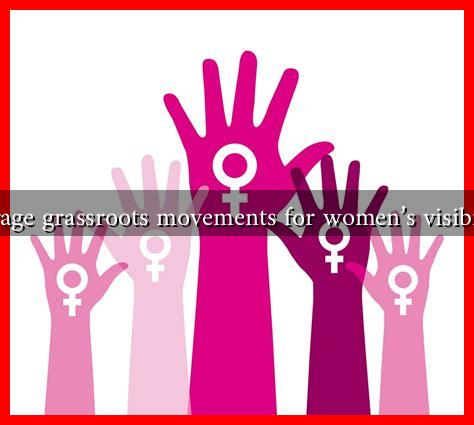-
Table of Contents
- How to Leverage Grassroots Movements for Women’s Visibility in Sports
- The Importance of Women’s Visibility in Sports
- Strategies for Leveraging Grassroots Movements
- 1. Building Community Support
- 2. Advocating for Media Coverage
- 3. Promoting Sponsorship and Funding
- Case Studies of Successful Grassroots Movements
- Statistics Highlighting the Need for Change
- Conclusion
How to Leverage Grassroots Movements for Women’s Visibility in Sports
In recent years, grassroots movements have emerged as powerful catalysts for change in various sectors, including sports. These movements, often driven by passionate individuals and communities, aim to elevate the visibility of women in sports, challenge stereotypes, and advocate for equal opportunities. This article explores how grassroots movements can be effectively leveraged to enhance women’s visibility in sports, providing insights, examples, and actionable strategies.
The Importance of Women’s Visibility in Sports
Women’s visibility in sports is crucial for several reasons:
- Inspiration: Increased visibility provides role models for young girls, encouraging them to participate in sports.
- Equality: Highlighting women’s achievements in sports promotes gender equality and challenges societal norms.
- Economic Impact: Greater visibility can lead to increased sponsorship and funding opportunities for women’s sports.
Despite these benefits, women in sports often face significant barriers, including media underrepresentation and lack of funding. Grassroots movements can play a pivotal role in addressing these challenges.
Strategies for Leveraging Grassroots Movements
To effectively leverage grassroots movements for women’s visibility in sports, consider the following strategies:
1. Building Community Support
Grassroots movements thrive on community engagement. Building a supportive community can amplify voices and create a collective impact. Here are some ways to foster community support:
- Organize Local Events: Host sports clinics, workshops, or tournaments that focus on women’s participation.
- Utilize Social Media: Create online platforms to share stories, achievements, and events related to women in sports.
- Collaborate with Local Organizations: Partner with schools, community centers, and sports clubs to promote women’s sports initiatives.
2. Advocating for Media Coverage
Media representation is crucial for increasing visibility. Grassroots movements can advocate for better coverage of women’s sports through:
- Petitions: Launch petitions to encourage media outlets to cover women’s sports events.
- Engagement with Journalists: Build relationships with sports journalists to highlight women’s achievements and stories.
- Creating Content: Develop blogs, podcasts, or video series that focus on women’s sports, showcasing athletes and their journeys.
3. Promoting Sponsorship and Funding
Financial support is essential for the growth of women’s sports. Grassroots movements can help attract sponsorships by:
- Highlighting Success Stories: Share success stories of female athletes to demonstrate the potential return on investment for sponsors.
- Engaging Local Businesses: Encourage local businesses to sponsor women’s sports teams or events.
- Creating Sponsorship Packages: Develop attractive sponsorship packages that outline the benefits of supporting women’s sports.
Case Studies of Successful Grassroots Movements
Several grassroots movements have successfully increased women’s visibility in sports:
- Women’s Sports Foundation: Founded in 1974, this organization advocates for gender equity in sports and has been instrumental in promoting women’s sports through various initiatives.
- SheIS: A movement that aims to elevate the visibility of women in sports by encouraging organizations to commit to equitable representation in media and sponsorship.
- Girls on the Run: This program combines running with life skills training for girls, promoting physical activity and self-esteem.
Statistics Highlighting the Need for Change
Statistics underscore the need for increased visibility and support for women in sports:
- Only 4% of sports media coverage is dedicated to women’s sports (source: Women’s Sports Foundation).
- Women receive only 0.4% of total sports sponsorship dollars (source: IEG Sponsorship Report).
- Participation rates for girls in high school sports have increased by 1,000% since Title IX was enacted in 1972, yet disparities remain in funding and resources.
Conclusion
Grassroots movements are essential for enhancing women’s visibility in sports. By building community support, advocating for media coverage, and promoting sponsorship opportunities, these movements can create lasting change. The success of initiatives like the Women’s Sports Foundation and SheIS demonstrates the power of collective action. As we continue to push for equality in sports, leveraging grassroots movements will be key to ensuring that women athletes receive the recognition and opportunities they deserve.


